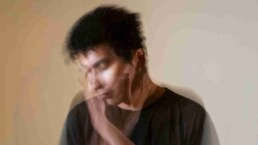What is a Behavioral Treatment?
Behavioral Treatment can be defined as a term that depicts an expansive scope of procedures or techniques that are used to change maladaptive ways of behaving. The main aim is to reinforce desirable ways of behaving and dispose of the undesirable ones. This type of therapy aims to recognize and assist with changing possibly reckless or self-destructive ways of behaving. All behaviours are learned and can be changed, so this theory presumes they can all be changed. An individual’s mental issues can be treated using many different behavioural therapies, but there is no one specific strategy that has been shown to work.
Table of Contents
ToggleTypes of Behavioral Treatment
The kind of Behavioral Treatment utilized can rely upon an assortment of variables, including the condition being dealt with and the severity of the individual’s side effects. A few Behavioral therapy examples are written down below:-
- Cognitive Behavioral Treatment
What is Cognitive Behavioral Treatment? Cognitive psychotherapy teaches patients how to identify and change destructive and distressing thought patterns that negatively influence their behaviour and emotions. It centres around patterns of activity, with mental treatment, which focuses on patterns of thought. Treatment revolves around how your considerations and convictions impact your activities and temperaments. It frequently centres around your present issues and how to address them. The drawn-out objective is to construct thinking and personal behavioural standards that assist you with accomplishing personal satisfaction and washing out problematic thoughts.
- Dialectical Behavioral Treatment
Patients with borderline personality disorder and emotional regulation disorder marked by self-destructive behaviour, depression, interpersonal relationships, and other symptoms are being treated by Dialectical behavioral treatment. It utilizes a behavioural and cognitive technique to aid patients with abilities and survival methods to assist them with driving better, more joyful lives.
- Cognitive-play Behavioral Treatment
This is also commonly known as behavioral treatmenty for children. This therapy mainly focuses on the mental health condition of children. By watching a kid play, a therapist can acquire knowledge about what a kid is awkwardly communicating or incapable of communicating. In Cognitive-behavioural play therapy treatment, the specialist additionally adopts a more straightforward strategy by working with both the kid and the parents to show the kid how to adapt well and accomplish their characterized objectives. The therapist is accomplishing something beyond watching the child play.
4. Rational Emotive Behavioral Treatment
Patients with negative and destructive mindsets, having thoughts and feeling to harm themselves or others are being treated by rational emotive Behavioral Treatment. This is an action-based approach that is centred around assisting individuals with managing nonsensical convictions and figuring out how to deal with their feelings, considerations, and ways of behaving in a better, more practical way.
5. Exposure Behavioral Treatment
This behavioral treatment uses behavioural techniques to assist individuals with beating their anxieties about circumstances or items. This approach joins procedures that open individuals to the source of their feelings of dread while practising relaxation strategies. It helps treat explicit fears and different types of nervousness.
Behavioral Treatment techniques
The therapeutic approaches used in behavioural treatment is based on the ideas of classical and operant conditioning.
Classical Conditioning
A classical conditioning process involves connecting stimuli together. Classical conditioning is one method for changing behaviour. This method of treatment employs several different tactics and procedures.
Systematic desensitisation-
It is an interaction that assists you with turning out to be less sensitive to specific triggers. The treatment involves people writing down a list of fears, then focusing on relaxing while they think about these fears. It involves learning relaxation techniques and breathing techniques as a starting point for replacing your fear responses.
Aversion therapy-
Aversion treatment is frequently used to treat diseases such as drug abuse and alcohol addiction. This method includes coupling an undesired behaviour with an uncomfortable stimulus in the hopes of reducing the unwanted practice. Depending on your therapy, you could be made to realise the relation of alcohol with unpleasant memories.
Flooding
It is a technique that includes constantly and intensely exposing people to fear-inducing objects or scenarios. It is frequently widely used for the treatment of phobias. The individual is stopped from fleeing or evading the danger during the process.
Operant Conditioning
The study of how reinforcement and punishment can be used to increase or decrease the frequency of a behaviour is known as operant conditioning. The likelihood of repeating a behaviour when it results in a positive outcome is higher, whereas a behaviour with a negative outcome is lower. This technique has the advantage of being laser-focused, allowing them to deliver quick and effective benefits.
Contingency management
It entails a formal signed agreement between a client and a psychotherapist that specifies behaviour-change objectives, reinforcements, incentives, and punishments. Because the restrictions are written out explicitly, contingency contracts can be quite successful in influencing behaviour because they prevent both parties from breaking their agreements.
Behaviour modelling
It is a type of training that involves observing and replicating the activities of others. Rather than depending exclusively on incentives or penalties, modelling helps people to learn new skills or acceptable behaviours by observing someone else do it.
Dr Chandril Chugh is indeed a famous brain expert. In the United States of America, he received extensive medical training. With more than sixteen years of experience in this profession, he is well-known among his patients for his politeness and excellent service attitude. He is not just concerned about his patient’s health, but he is also a pleasure to converse with at each and every meeting. It’s uncommon to find a doctor that combines excellent medical care with personal touches and concern for each patient as an individual.
Conclusion
Behavioural Treatment is an effective therapy that can be used to address a variety of difficulties, including bipolar illness management. It focuses on identifying issues and discovering how you respond to them. This program guides you through the process of replacing negative impulses with more objective and calm views. Self-awareness and coping skills can be improved as a result of behavioral therapy.

Dr Chandril Chugh
Dr. Chandril Chugh is a U.S.-trained neurologist with over a decade of experience. Known for his compassionate care, he specializes in treating neurological conditions such as migraines, epilepsy, and Parkinson’s disease. Dr. Chugh is highly regarded for his patient-centered approach and dedication to providing personalized care.
Related Blog Posts
Physical manifestations of depression and anxiety
November 3, 2023




